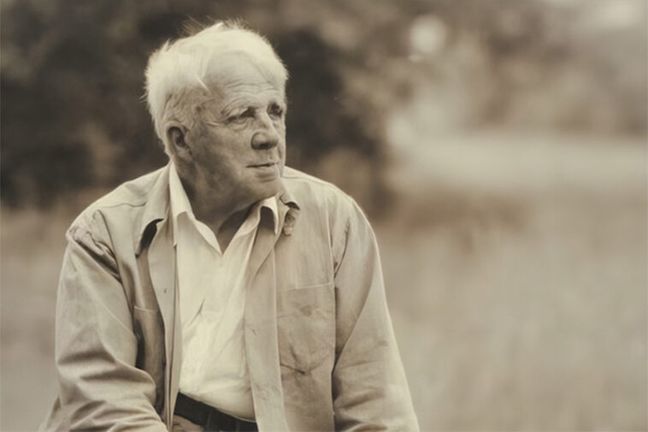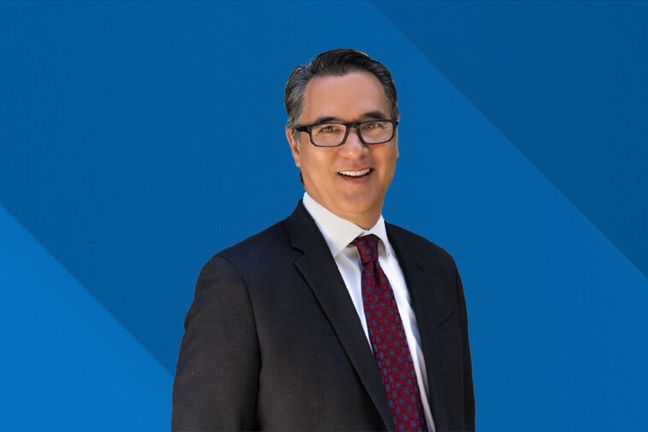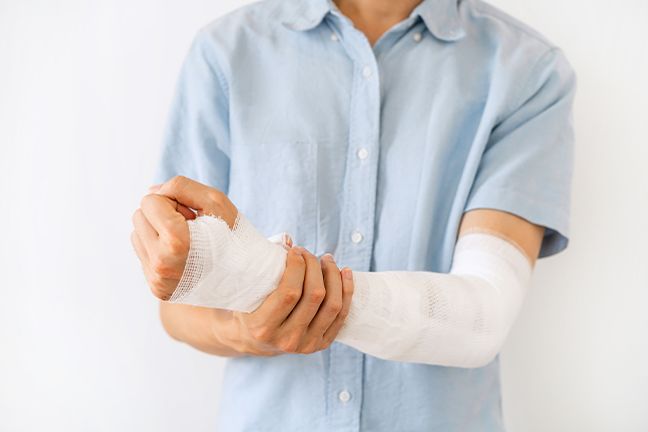When expert witnesses come to contrary conclusions on the same issues, it can create a lot of tension and frustration for all involved in a case. Expert witness “hot tubbing” is a relatively new tool some courts have been trying out in an attempt to relieve this tension and efficiently utilize experts to work through the knots in the case. “Hot tubbing” in court has been gaining popularity in recent years and is becoming a widely used and accepted practice.
Expert witness “hot tubbing” is also known by a few other names, such as “concurrent expert testimony,” “concurrent evidence,” and “witness conferencing.” “Hot tubbing” involves all experts of the parties on a particular topic being placed under oath and testifying at the same time during a trial. This is in contrast to the traditional method in the U.S., where witnesses testify one at a time and each party may obtain and examine their own witnesses and cross-examine any witnesses of opposing parties.
In order to conduct an expert “hot tub,” the court will often instruct the experts to exchange reports before the trial, meet, and identify primary areas of agreement and disagreement to serve as the agenda that will be discussed in court. Once the experts are placed under oath, the court leads and facilitates a discussion with the experts which is less formal and less rigid than traditional testimony. The court and counsel may pose questions to the group of experts or directed to individual experts. Each expert may speak freely in the discussion, explain their analyses and opinions, ask questions of other experts, and provide immediate feedback on the analyses and positions of other experts. The court may direct the discussion and focus on matters the court considers most important to resolve. The purpose of this process is to help the court better understand the issues and the expert analyses in order to make appropriate rulings in the matter.[i]
The first reported case utilizing the expert witness “hot tubbing” tool in the United States involved a three-judge panel of the Federal District Court for the District of Massachusetts in 2003, where two political scientists were examined about their election analysis and the voting power of minority voters.[ii] One of the panel members, Massachusetts U.S. District Judge, Douglas Woodlock, found the practice so effective that he “hot tubbed” with experts in several other cases including patent and business cases and a criminal case.[iii]
The late U.S. Tax Court Judge David Laro “hot tubbed” at least eight or nine times and proclaimed, “Hot tubbing is hot right now.”[iv] Former United States Court of Federal Claims Judge Lawrence Block went “hot tubbing” in a breach of contract case involving complex evidence on financial valuations.[v] Northern Ohio U.S. District Judge Jack Zouhary tried it in an antitrust class-action and he “…would not hesitate to use it again in the right case.”[vi] Northern California U.S. District Judge James Donato tried it in an antitrust class action with economic experts, and he recently announced he plans to do it again.[vii] Many judges in the United States are now trying out expert witness “hot tubbing.”
In Australia, where the practice originated, “hot tubbing” has been utilized for about 50 years.[viii] It is a common practice used in a variety of civil cases, including medical litigation, patent cases, insurance cases, and occasionally in criminal cases.[ix] Countries including the United Kingdom, Canada, New Zealand, Hong Kong, Austria, Singapore, and Japan are also jumping in and trying out the expert witness “hot tub.”[x]
There is no specific authority for “hot tubbing” or guidance on how to properly conduct an expert “hot tub” in the U.S. However, the Federal Rules of Evidence and state codes of evidence often give judges a lot of discretion in how witnesses are examined. Federal Rules of Evidence have been interpreted to allow for “hot tubbing.”[xi] Rule 611 gives judges “reasonable control over the mode and order of examining witnesses and presenting evidence so as to: (1) make those procedures effective for determining the truth; (2) avoid wasting time; and (3) protect witnesses from harassment or undue embarrassment.”[xii] Rule 614 permits judges to call and “examine witnesses regardless of who calls the witness.”[xiii] Rule 102 clarifies that the purpose of the Federal Rules of Evidence is “to administer every proceeding fairly, eliminate unjustifiable expense and delay, and promote the development of evidence law, to the end of ascertaining the truth and securing a just determination.”[xiv] State court rules of evidence may have similar provisions which can also be interpreted to allow for “hot tubbing,” though the practice of “hot tubbing” is more often used in cases in federal court at this time.
Under the traditional method of eliciting expert witness testimony, particularly where there are multiple experts, taking each expert’s testimony can be very time consuming and expensive. Additionally, under traditional methods, the testimony of different experts may be given hours, days, or even weeks apart, and it can be difficult to remember and keep track of the points of contention and compare and contrast the positions, particularly when experts are testifying about challenging and highly technical matters.
Additionally, significant time can be lost unnecessarily questioning matters of little importance which may not actually be points of contention between the experts. Under the traditional method of eliciting expert witness testimony, experts never get the opportunity to respond directly to each other. Experts may not be fully aware of the opinions of other experts, the basis of their opinions, and there may be gaps in information between the experts.
Under traditional methods where experts must only respond to questions asked, important information may be missed, or experts may be used to further a party’s position rather than to get to the whole truth of the particular issue. “Hot tubbing” can eliminate some of these issues, giving the experts the ability to speak freely and interact with one another.[xv]
While “hot tubbing” may sound like a good time, there are also dangers to be aware of. Because there is no specific authority and guidance on “hot tubbing” with experts in the U.S., “hot tubbing” means entering uncharted waters. Lack of authority and guidance can lead to inconsistencies, confusion, and frustration over how to direct the process and handle any challenges which may arise. Further, the process assumes the expert witnesses will actively engage with each other; however, some expert witnesses may be set in their opinion and not open to accepting unsolicited input from other experts. The process may also allow expert witnesses with more assertive personalities to dominate the process.[xvi]
Additionally, judges are given a lot of discretion to control and facilitate the “hot tub” discussion and are given the dominant role in the questioning process. Attorneys and parties, who typically play the dominant role in eliciting testimony, are given a more minor role and must relinquish their control over the process.[xvii]
The process also makes it much more difficult to cross-examine expert witnesses on issues of expertise, credibility, and bias, which is traditionally an important part of examining expert witnesses.[xviii] As Joe Cecil of the Federal Judicial Center in Washington, D.C. noted, “Assuming the judge has an active interest in ferreting out the truth and the experts are candid, I prefer the hot-tubbing option…but those are two bold assumptions, and the procedure drives the attorneys nuts.”[xix]
It has yet to be determined just how hot “hot tubbing” may ultimately become in U.S. courts. Overall, the majority of feedback on the “hot tubbing” process appears to suggest it can be very beneficial in the right type of case, as it makes it easier to work out the knots in case, improves the quality of the evidence presented, and makes for a more efficient and effective use of expert witness testimony than traditional methods. Many judges in the U.S. who have tried “hot tubbing” speak highly of the process and are willing to do it again.[xx] According to surveys conducted in Australia, 94.9% of judges were satisfied with the procedure. Even the majority of expert witnesses approve of the “hot tub” method and believe that it better assists them in their duty to inform the court than traditional methods.[xxi] Justice Peter McClellan of the Federal Court of Australia stated, “You can feel the release of the tension which normally infects the evidence-gathering process.”[xxii] “Hot tubbing” may just be the hot new remedy to try for easing tensions with expert witness testimony.
Keep Reading
Sources
[i] Judicial Commission of New South Wales and the Australasian Institute of Judicial Administration, “Concurrent Evidence” https://www.youtube.com/watch?v=u9DTJ5sYB7A (2006).
[ii] Kate Krause, Esq., Hot Tubbing and Expert Conferences-Using Concurrent Expert Evidence to Streamline Construction Arbitration, (2020) 74 Disp. Resol. J. 79, at 84; Black Political Task Force v. Galvin (D. Mass. 2004) 300 F.Supp.2d 291.
[iii] Kate Krause, Esq., Hot Tubbing and Expert Conferences-Using Concurrent Expert Evidence to Streamline Construction Arbitration, (2020) 74 Disp. Resol. J. 79, at 84; John Emmerig, John Hanify, Michael Legg, and Jason Weida, United States: Room In American Courts For an Australian Hot Tub? The Metropolitan Corporate Counsel, Calume 21, No. 5 https://www.mondaq.com/unitedstates/court-procedure/237192/room-in-american-courts-for-an-australian-hot-tub (May 2, 2013).
[iv] Christina Weed, Interview with Tax Court Judge David Laro, https://www.cccba.org/article/interview-with-tax-court-judge-david-laro/#:~:text=I%20have%20employed%20hot%20tubbing,the%20courtroom%20without%20the%20attorneys (September 2017);
[iv] Anjelica Cappellino, ‘Hot-Tubbing’ Expert Witnesses: An Experimental Techniques from Australia Makes a Splash in U.S. Courts, https://www.expertinstitute.com/resources/insights/hot-tubbing-expert-witnesses-an-experimental-technique-from-australia-makes-a-splash-in-u-s-courts/ (August 23, 2021).
[v] Justice Rachel Pepper, ‘Hot-Tubbing’: The Use of Concurrent Expert Evidence in the Land and Environment Court of New South Wales and Beyond, https://lec.nsw.gov.au/documents/speeches-and-papers/PepperJ%20Alaska%20Bar%20Convention%20-%20Hot-tubbing%20or%20Concurrent%20Evidence%20paper(Final)%20140515.pdf (April 28, 2015).
[vi] Anjelica Cappellino, ‘Hot-Tubbing’ Expert Witnesses: An Experimental Techniques from Australia Makes a Splash in U.S. Courts, https://www.expertinstitute.com/resources/insights/hot-tubbing-expert-witnesses-an-experimental-technique-from-australia-makes-a-splash-in-u-s-courts/ (August 23, 2021).
[vii] Bonnie Eslinger, Google Judge Promises ‘Hot Tub’ After Epic’s Antitrust Win, https://www.law360.com/california/articles/1787439?nl_pk=67b18ba3-fc67-42d9-942f-5dfe52f51023&utm_source=newsletter&utm_medium=email&utm_campaign=california&utm_content=2024-01-19&read_main=1&nlsidx=0&nlaidx=1 (January 18, 2024).
[viii] Kate Krause, Esq., Hot Tubbing and Expert Conferences-Using Concurrent Expert Evidence to Streamline Construction Arbitration, Disp. Resol. J., 2020, at 79, 82
[ix] Emmerig, J., Hanify, J. D., Legg, M., & Weida, J. C. (2013, April); Lisa C. Wood, Experts in the Tub, 21-SUM ANTITR 95, Summer 2007; Edie Greene, Natalie Gordon, Can the “Hot Tub” Enhance Jurors’ Understanding and Use of Expert Testimony? (2016) 16 Wyo. L. Rev. 359, 378.
[x] Kate Krause, Esq., Hot Tubbing and Expert Conferences-Using Concurrent Expert Evidence to Streamline Construction Arbitration, (2020) 74 Disp. Resol. J. 79, at 84.
[xi] Edie Greene, Natalie Gordon, Can the “Hot Tub” Enhance Jurors’ Understanding and Use of Expert Testimony? (2016) 16 Wyo. L. Rev. 359, 379
[xii] Fed. Rules Evid., rule 611(a)(1)-(3).
[xiii] See Fed. Rules Evid., rule 614(a)-(b).
[xiv] See Fed. Rules Evid., rule 102, 28 U.S.C.A.
[xv] Judicial Commission of New South Wales and the Australasian Institute of Judicial Administration, “Concurrent Evidence” https://www.youtube.com/watch?v=u9DTJ5sYB7A (2006).
[xvi] Edie Greene, Natalie Gordon, Can the “Hot Tub” Enhance Jurors’ Understanding and Use of Expert Testimony? (2016) 16 Wyo. L. Rev. 359, 381.
[xvii] Edie Greene, Natalie Gordon, Can the “Hot Tub” Enhance Jurors’ Understanding and Use of Expert Testimony? (2016) 16 Wyo. L. Rev. 359, 382.
[xviii] Owain Stone, Samantha Farthing “ An ‘instruction manual’ for the hot tub? New guidance from the CIArb on concurrent evidence in arbitrations,” https://kordamentha.com/insights/manual-for-hot-tub-concurrent-evidence (July 25, 2019).
[xix] Anjelica Cappellino, ‘Hot-Tubbing’ Expert Witnesses: An Experimental Techniques from Australia Makes a Splash in U.S. Courts, https://www.expertinstitute.com/resources/insights/hot-tubbing-expert-witnesses-an-experimental-technique-from-australia-makes-a-splash-in-u-s-courts/ (August 23, 2021).
[xx] Kate Krause, Esq., Hot Tubbing and Expert Conferences-Using Concurrent Expert Evidence to Streamline Construction Arbitration, Disp. Resol. J., 2020, at 79, 96
[xxi] David Sonenshein, Charles Fitzpatrick, The Problem of Partisan Experts and the Potential for Reform Through Concurrent Evidence (2013) 32 Rev. Litig. 1, 62.
[xxii] Anjelica Cappellino, ‘Hot-Tubbing’ Expert Witnesses: An Experimental Techniques from Australia Makes a Splash in U.S. Courts, https://www.expertinstitute.com/resources/insights/hot-tubbing-expert-witnesses-an-experimental-technique-from-australia-makes-a-splash-in-u-s-courts/ (August 23, 2021).


 Editor: Grace Shuman
Editor: Grace Shuman
 Shining Light on Phantom Medical Bills–Lessons from Washington on Using Federal Hospital Price Transparency Rules to...
Shining Light on Phantom Medical Bills–Lessons from Washington on Using Federal Hospital Price Transparency Rules to...
 When Roads Diverge in the Wood: the Power of Risk in Building a Fulfilling Career and Stopping Nuclear Verdicts®
When Roads Diverge in the Wood: the Power of Risk in Building a Fulfilling Career and Stopping Nuclear Verdicts®
 Ask Atty: Scott Ruksakiati
Ask Atty: Scott Ruksakiati
 Audish v. Macias Builds Upon the Foundation Started in Howell v. Hamilton Meats & Provision, Inc. By Affirming the Admissibility of Medicare...
Audish v. Macias Builds Upon the Foundation Started in Howell v. Hamilton Meats & Provision, Inc. By Affirming the Admissibility of Medicare...
 My New Year’s Resolutions at Work
My New Year’s Resolutions at Work
 Barking Up the Wrong Policy
Barking Up the Wrong Policy
 California Civil Procedure Code Section 998 – a Means to An End
California Civil Procedure Code Section 998 – a Means to An End
 May or Must: California and the Ninth Circuit Applies Grammar Rules for FMLA
May or Must: California and the Ninth Circuit Applies Grammar Rules for FMLA
 Par For the Course
Par For the Course